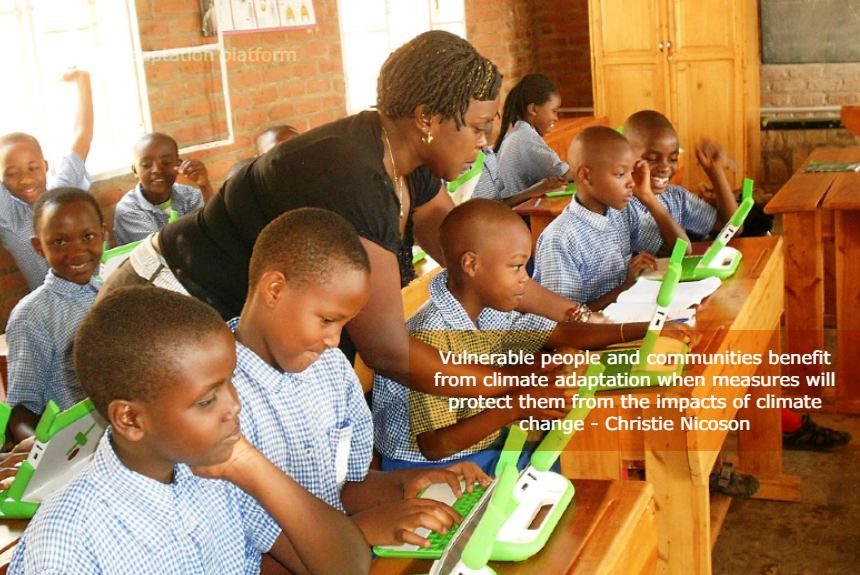Can climate adaptation bring peace to areas that are experiencing conflicts and poverty?
Daniel Pearson’s article “Climate adaptation could make the world more peaceful ” discusses this issue. He observes that climate adaptation is becoming increasingly crucial in poor countries suffering the impacts of climate change.
Some salient points that Pearson mentioned in his article:
- Climate adaptation includes actions that help us cope with the negative consequences of change, such as building sea walls to protect against storm surges and rising sea levels or using drought-resistant crops for prolonged dry seasons.
- These actions are crucial in areas experiencing food insecurity and conflicts, such as Syria and East Africa.
- People most affected are those living in poverty, with no access to technology and information, and are isolated, politically or religiously marginalised. climate extremes can fuel these conflicts, such as droughts or insufficient rains, causing food insecurity.
In her article “Will climate adaptation move us toward peace?” Christie Nicoson says that climate adaptation has been praised for its potential to contribute to peace, and policymakers and practitioners have been integrating climate change actions into their peacebuilding works (Nicoson, 2018).
She claims that climate change hinders development and increases vulnerabilities and insecurities. It is also a threat multiplier in the sense that it adds to the already existing pressures that the communities are facing, such as conflicts, post-conflict scenarios, and poverty. Imagine these communities facing floods, droughts, and diseases caused by climate change in addition to their already existing predicaments (Nicoson, 2018).
So, how does climate adaptation lead to peace?
Vulnerable people and communities benefit from climate adaptation when measures will protect them from the impacts of climate change, Nicoson points out.
Explaining further, she said that climate adaptation involves:
- transformation of human and natural systems through structural, physical, institutional and social changes to avoid climate change consequences.
- responding to or anticipating projected or actual climatic changes, and taking steps to implement appropriate protections, reduce adverse impacts, or take advantage of potential opportunities.
- infrastructural and institutional developments, agricultural and pastoral adjustments, or migration. Many of these strategies are intended to reduce vulnerability to natural hazards.
Climate adaptation and peace
Environmental issues can provide opportunities to strengthen cooperation and peacebuilding; water and natural resources management can also be an opportunity for peacebuilding and cooperation and support post-conflict recovery, especially in preventing renewed violence that stems from natural resource conflicts (Nicoson, 2018).
Nicoson mentions several examples of climate adaptation programs in Rwanda that impact their lifestyle, economics, and environment. These are:
- Climate adaptation involves improved climate information systems, increased capacity for prevention and preparedness, and increased public awareness, among other things.
- Also, providing agricultural training and knowledge to people, for example, improves the quality of soil and prevents erosion.
- These climate adaptation measures have had positive impacts on the community because they rehabilitated their land, established sustained livelihoods, and improved their well-being (Nicoson, 2018).
Another study, “Climate security and a vulnerability model for conflict prevention”, also tackles how climate change adaptation can offset climate-related conflicts.
The study says that links between conflict and climate change involve complex interactions, and there are many factors that help mediate the impacts of climate change.
The study reviewed several related works of literature on climate conflict and climate adaptation and has come up with the following conclusions:
- There is a pattern or link between climate conflict and climate adaptation, and adaptation has the potential to be a pathway for preventing conflicts.
- Vulnerability (exposure, sensitivity, and capacity to adapt) is a key to understanding the relationship between climate adaptation and conflict prevention and is a subject for future research.
In countries heavily dependent on agriculture and farming, disruptions in the form of climate variability and conflicts can have great consequences. The resulting food insecurity can add pressure to the already volatile situation that vulnerable communities live in.
However, as studies and related literature have shown, implementing climate adaptation programs that restore and/or protect their agriculture, farming, and water sources can help alleviate the situation and thus be a significant tool to promote peace.
References:
Pearson, D. (2019, December 4). Climate adaptation could make the world more peaceful. Word Economic Forum. Retrieved from https://www.weforum.org/agenda/2019/12/climate-adaptation-war-peace/
Nicoson, C. (2018, October 18). Will climate adaptation move us toward peace?. PRIO Climate & Conflict. Retrieved from https://blogs.prio.org/ClimateAndConflict/2018/10/will-climate-adaptation-move-us-toward-peace/
Pearson, D., Newman, P. (2019). Climate security and a vulnerability model for conflict prevention: a systematic literature review focusing on African agriculture. Sustain Earth 2, 2 (2019) doi:10.1186/s42055-019-0009-6 Retrieved from https://sustainableearth.biomedcentral.com/articles/10.1186/s42055-019-0009-6
PHOTO CREDIT: Children in a Rwandan primary school by RudolfSimon – Own work, CC BY-SA 3.0, Link. The photo size has been altered to fit the website requirement, and the caption has been added.



Leave a Reply